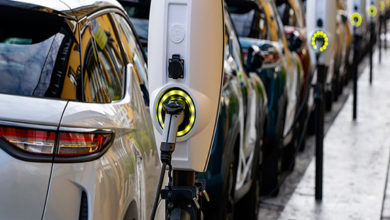Battery Solutions Technology

Battery Solutions
Battery Solutions Technology, as it were, batteries are unsung heroes in our lives. The role of batteries, solutions as it were, transcends most pieces of modern technology, from powering your smartphone to driving electric vehicles and storing renewable energy. But exactly what are battery solutions, and why should they matter that much? In this article, we go in-depth into the world of batteries, discussing types, applications, and what it truly holds for the future of this crucial technology.
Types of Batteries
Primary Batteries (Non-Rechargeable)
Primary batteries are a category of batteries that you can use once and discard without much fuss. Convenient, inexpensive, and found in almost anything, from remote controls to flashlights. But what most probably don’t know is that there’s actually more than one kind of primary batteries.
Lithium Batteries
Where you need something with just that little bit more oomph, come lithium batteries. They pack a lot of power in a small package and have much longer shelf life compared to alkaline batteries. Think of them as the luxury sports car of the battery world: high performance but at a greater cost.
Alkaline Batteries
Alkaline batteries are probably what most people think of when they think of your typical AA or AAA battery. These are the workhorses of the battery world, offering decent energy output and a long shelf life. You can find them powering toys, clocks, and even some medical devices.

Secondary Batteries (Rechargeable)
These are the batteries you can use over and over again. Rechargeable batteries are better for the environment and your wallet, but what makes them so special?
Before lithium-ion took over, NiMH batteries were the top dogs in rechargeable battery tech. They’re still used today in some applications like digital cameras and cordless phones. They’re robust and relatively safe but don’t pack as much punch as lithium-ion batteries.
Lithium-Ion Batteries
You’ve probably heard of lithium-ion batteries—they’re everywhere, from your smartphone to your electric vehicle. They offer high energy density, meaning they can store a lot of power relative to their size. However, they do have a limited lifespan, which is why your phone battery doesn’t last as long after a couple of years. Nickel-Metal Hydride (NiMH) Batteries
Renewable Energy Storage
Wind Energy Storage
Like solar, wind also relies on battery storage. Wind energy storage helps in balancing the demand and supply, keeping the generated power through the turbines of wind whenever the wind is not blowing.
Solar Power Storage
The other big issue of renewable energy relates to storage. The storage of solar power depends on a great deal of batteries that store energy throughout the day for use during the night. Hence, batteries can be considered the necessary component of any solar power setup.

c

Applications of Battery Solutions
Batteries are everywhere, and their applications are as varied as they are essential. Let’s explore some of the key areas where battery solutions shine.
Smartphones and Laptops
Your smartphone and laptop probably run on the power of a lithium-ion battery. These batteries have made our devices portable, allowing us to work, play, and communicate on the go. But with great power comes great responsibility: these batteries need to be managed properly if their life is to be as long as possible.
Wearables
Wearables vary from fitness trackers to smartwatches, and small, lightweight batteries are needed to keep pace with the active lifestyle that most people engage in. The more wearable devices increase in functionality, the higher the demand for more effective battery solutions.
Electric Vehicles (EVs) Types of EV Batteries
Of course, electric vehicles represent the poster child in battery innovation. Most EVs use big lithium-ion packs that have to be both powerful and durable. They also will have to bear extreme temperatures, charging and discharging multiple times, and a long life-all while providing enough power for hundreds of miles on one charge.
Challenges in EV Battery Technology
So far, so good, EVs have their work cut out for them. Areas needing huge innovation are issues of charging times, degradation, and environmental impact in mining raw materials.
The Role of AI in Battery Development
Artificial intelligence finds its place increasingly in the development of batteries. AI enables optimization and failure prediction. It’s also possible to create entirely new types of batteries.
Environmental sustainability and battery recycling
Sustainability will be a buzzword for the future. Recycling batteries and using environmentally friendly materials in their production can greatly reduce the damage caused by batteries produced and disposed of on Earth.
How do lithium-ion batteries work?
Lithium-ion batteries work by moving lithium ions between the positive and negative terminals to create an electric current.
What is the difference between main battery and backup battery?
The main battery cannot be recharged. Use only once and then discharge. Meanwhile, spare batteries are rechargeable and can be used multiple times.
Factors to consider when choosing a battery solution
Not all batteries are created equal. There are many factors to consider when choosing a battery solution.
Energy density
Energy density is a measure of the amount of energy a battery can store relative to its size. Higher energy density means longer lasting power. But it usually has a higher cost.
Lifespan and Durability
How long a battery lasts and how well it holds up over time are crucial considerations. Some batteries degrade faster than others, so you’ll want to choose a solution that meets your needs.
From the extraction of raw materials to their final disposal. Switch to a more environmentally friendly option or recycle your old batteries.
Value
Finally, there is the cost factor: the right balance between performance and price. Sometimes investing in a high-priced battery is worth it if it can provide good overall performance over the long term.
The Future of Battery Solutions Technology
The future of battery solutions is bright, with numerous innovations on the horizon.
Innovations in Battery Technology
Be it solid-state batteries, flow batteries, or anything else, the next generation of batteries promises much: safer and more efficient, longer-lived. These innovations just may revolutionize everything from consumer electronics to renewable energy.




